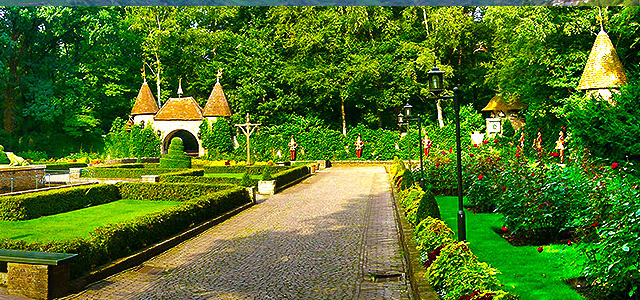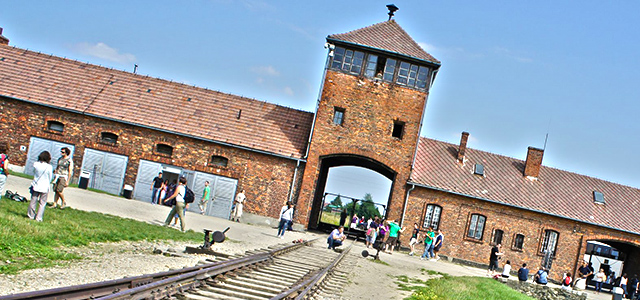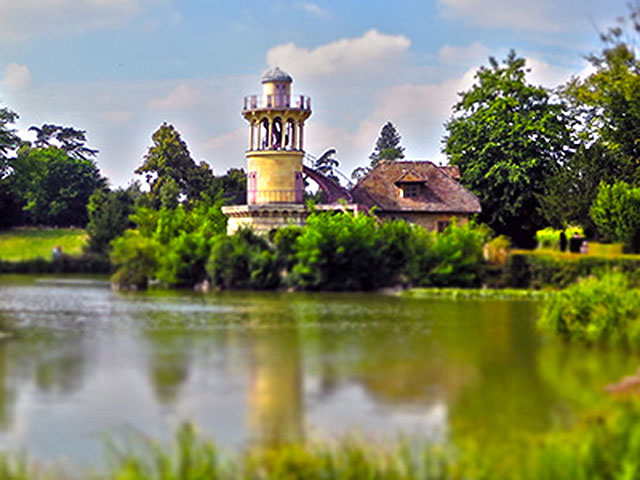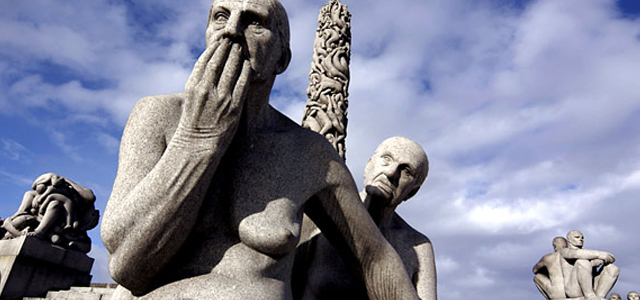
Oslo: a city of contradictions
Tucked away in Nordic Europe, Oslo bears the title of Scandinavia’s oldest capital. The city of contradictions is home to a contrasting sight of soaring skyscrapers and modern architecture amidst forested ridges and flourishing wilderness.
Steeped in history of centuries past, visitors to Oslo can relive fascinating Viking stories, gawk at grand palaces and stop to admire the many statues dotted around the city.
Attractions
If you have limited time in Oslo, you could still get plenty accomplished if you plan your time efficiently and plot your routes well.
The Royal Palace
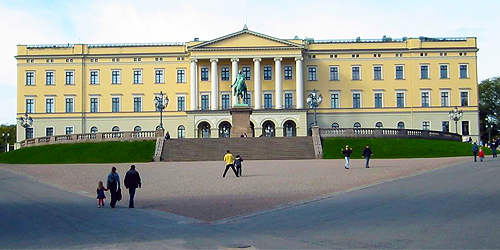
A good starting place if you’re looking to learn the history of this Norwegian Capital. Greeting you regally at the front of the palace is Karl Johan, King of Sweden from 1818 to 1844. The dull palace exterior may be a turn-off, but inside its walls is pure opulent splendour. Also, prepare for a visual feast of the expansive Palace Park adorned with statues, embraced with shimmery lakes. Explore the place on your own, or choose to take a tour.
Changing of guards takes place every day between 13:30 and 14:00hrs. If you do pass by the guards, take note of their distinctive uniform- an interesting sight of Blue Jacket, Black Trousers, and plumed bowler hat, almost unchanged for more than 140 years. What’s the reason behind it you ask? Well, story has it that Princess Louise of Sweden adored the hats donned by the Bersalieri Alphine soldiers from Italy, and thus insisted on the Norwegian Army switching to these back in 1860. It’s as whimsical as that.
Tip: Depending on which guards on duty, sometimes, you may get lucky and they will pose of pictures. But do brace yourself for rejection. Not all of them are friendly.Viking Ship Museum
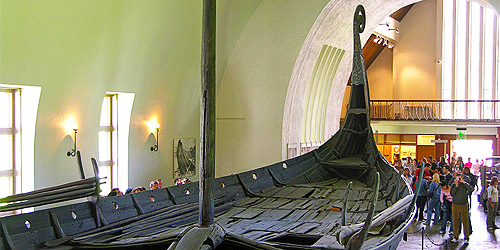
You can’t visit Oslo or Norway in general, without learning more about Vikings. And there’s no better place to get a hefty dose of these fearless warriors than the Viking Ship Museum. An ode to the Norsemen who left an imprint on Norwegian history, there are three beautifully maintained 1000-year old Viking ships and an extensive collection of artifacts, uncovered from burial mounds. The museum is dotted with signs in both English and Norwegian, for easy reading. Although a tad on the small side, but if you like Viking history; it really doesn’t get better than this.
Getting to the museum is easy. For a scenic journey, take the ferry (91) from the Oslo harbor. The Day Pass you purchase for the subway, trams and buses can also be used for this ferry.
Tip: It’s good to start at the Viking Ship Museum earlier in the day. Tourists are known to flock there in the afternoons. That is if you want to snap images of the ships without any random tourists in them.Norwegian Folk Museum
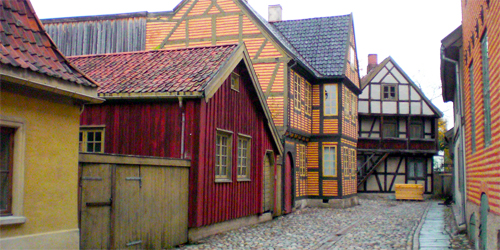
Just a stone throw away is the Norwegian Folk Museum, which instantly catapults you way back into Norwegian past. The open-air museum features over 150 houses, wooden barns and storehouses found in the olden days. There are also people dressed as bakers, builders, craftsmen and more in the 1500s, discussing what life was like then. They teach visitors how natural resources were used to build and maintain the houses and how they care for their daily needs. The museum also features numerous exhibitions from all over the country and an extensive photographic archive. A visit to this place makes you appreciate modern technology and inventions we take for granted.
Tip: Visit this place in the summer; with many of the exhibits being outdoors, that when you’ll get the most out of the museum.
Akershus Fortress
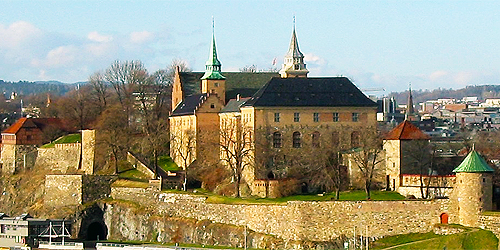
If you’re a fan of all things medieval, don’t miss the Akershus Fortress, minutes from the city center. What began as a medieval castle in the 1300s was expanded to a formidable fortress designed to protect Oslo. This fortress has survived countless sieges over the years. It was in the early 17th century that the fortress underwent modernization under King Christian IV’s reign. Explore the grand fortress interiors, furnished with lavish banquet halls and staterooms, and the charming chapel, now reserved for royal events, then venture down to the dingy dungeons for a taste of gloom and doom. Remember to wander around the grounds with the voice-guide. It’s free and comes with ancient ghost stories to set the mood.
Art in Oslo
Art is huge in Norway. And nothing screams art better than Edward Munch, the expressionist painter and printmaker of the famous “The Scream” painting. Munch’s work finds residence at the National Museum of Art, which is also home to an extensive selection of paintings by other Norwegian artists. But if you adore Munch, a must-visit is the Munch Museum, where the artist’s entire art collection is displayed. Munch had bequeathed his works to the city of Oslo.
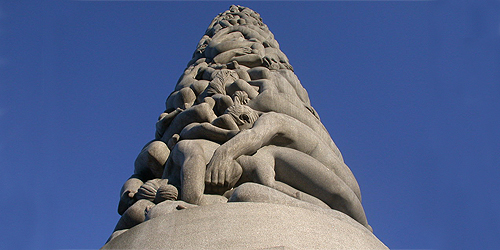
If you’re in the mood for a dash of nature with a sprinkle of art, visit the Vigeland Sculpture Park located in Frogner, west of the city center. Named after Gustav Vigeland, Norway’s greatest sculptor, the enormous and artfully landscaped park is home to around 200 of Vigeland’s sculptures. Vigeland is appreciated for his uncanny ability to transform complex human emotions into art form. Taking centerstage in the park is the magnificent “Monolith”, Vigeland’s biggest creation- an intricately carved sculpture that features a human’s journey from the cradle to the grave. The sculpture was said to take him 14 years to complete!
Food in Oslo
There is a comfortable blend of both expensive and affordable places to eat in Oslo. Asian restaurants here typically serve up cheap and good-tasting food. One word of advice though- do check the menu at the door to see if it’s your cup of tea.
Head to the Aker Brygge, by the waterfront, down south of the city hall for a labyrinth of outdoor restaurants and bars. You can take tram numbers 12 or bus 21, 32, 33 or 54 to get there. Summer time is where the area is at its most vibrant. Get a table, grab some seafood with beer and it’s almost heaven on a hot summer day. But be warned, it can get pricey in this district.
There are also a whole lot of restaurants, bars and clubs at the city center to choose from. When at any of these F&B outlets, try some brown cheese. Norwegians are pretty proud of their cheese, which surprisingly, taste more like caramel than cheese, even those cheese-averse might be able to take this. Game meat is rather popular in this part of the world as well, and Reindeer meet is always a safe option- the taste is not so strong.
Tip: A must-try in Oslo is the 19OK hotdog, often referred to as “grillpølse” or “kjempegrill”. They are known to keep blood sugar low.Norway is a fishing nation, and has been for centuries; it’s only natural to indulge in fish when you’re in Oslo. Cod, coalfish and salmon are most commonly found on the menu, mostly served as fishcakes or poached. But for the adventurous, try the “lutefisk” or Iye fish if you can.
Drinks are expensive in Norway in general, so don’t go overboard lest you find yourself unable to carry on your journey, heavily in beer debt. Beer is more popular here than wine, and the most common type of beer found here is the pilsner.
If you must drink, then you must try the Norwegian akevitt, a flavoured, distilled liquor, ranging in 42 to 45 percent in alcohol. The color runs from clear to pale yellow, distilled from a fermented potato or grain mash, then flavoured with caraway seeds or cumin seed, which will set you reeling after a couple of shots.
Getting around in Oslo
Oslo’s has a comprehensive public transportation system, linking together a gigantic web of buses, trains, metro and boats. All of them run on the same fare scheme and ticket validity. One single ticket for a zone costs 28NOK when bought in advance or 440OK when bought onboard your transport. It’s definitely advisable for you to grab your tickets first. When stamped or validated, the ticket is valid for one hour of travel on any transport system. Other ticket types that are available include Day Pass and 7-Day pass. If you are lugging a bike around, it needs a ticket as well.
By metro
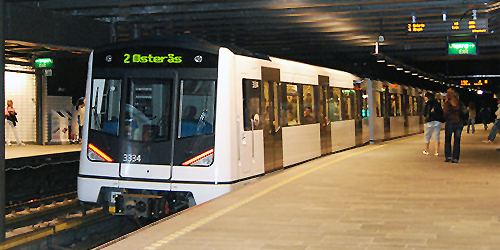
Oslo has one of the largest metro systems in Europe, known as the Tunnelbane or T-bane in Norwegian.
T- bane stations are easy to spot, look out for a blue and white logo with an encircled “T”. There are six lines, with all of them merging together to one single tunnel fanning through the city center before spreading into the suburbs. Interesting fact: Oslo’s metro used to be one of the most run-down in Europe, but today, it’s metro trains are engineered by Siemens and designed by Porsche.
By bus or tram
complementing the metro network are trams and buses, covering most of the city, and running from 5am to midnight. All tram lines run every 10 minutes in daytime, and every 20 minutes at night and early morning. For weekend mornings, it runs at 30-minute intervals. Trams are useful as the main lines cover parts of the city untouched by the metro. The central tram terminal is at Jernbanetoget, where all the tram lines converge.
By Taxi
With an extensive tram, bus and metro system, there really isn’t a need to take taxis in Oslo, also because they are quite expensive here. The minimum charge for most taxi companies are at least 80NOK, which can go up to 160NOK on weekend nights. If you, for some reason, desperately need one, then hunt for any nearby hotels or train stations, where they usually hang out. Taxi drivers’ name and licenses are not found anywhere in the taxi, which can be unsettling for some folks.
A place where modern meets medieval, contemporary versus culture, Oslo’s fascinating contradictions make it an interesting visit.
